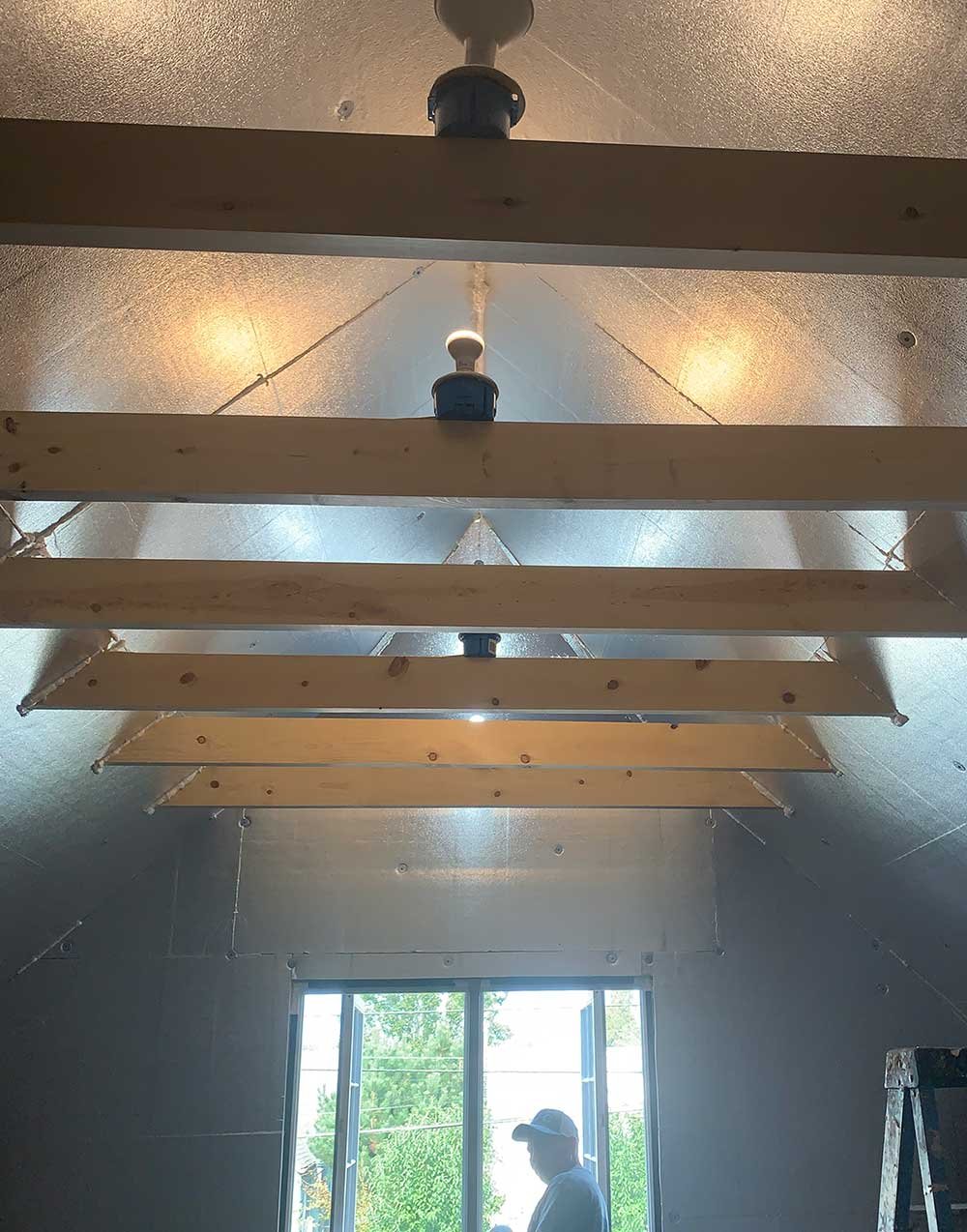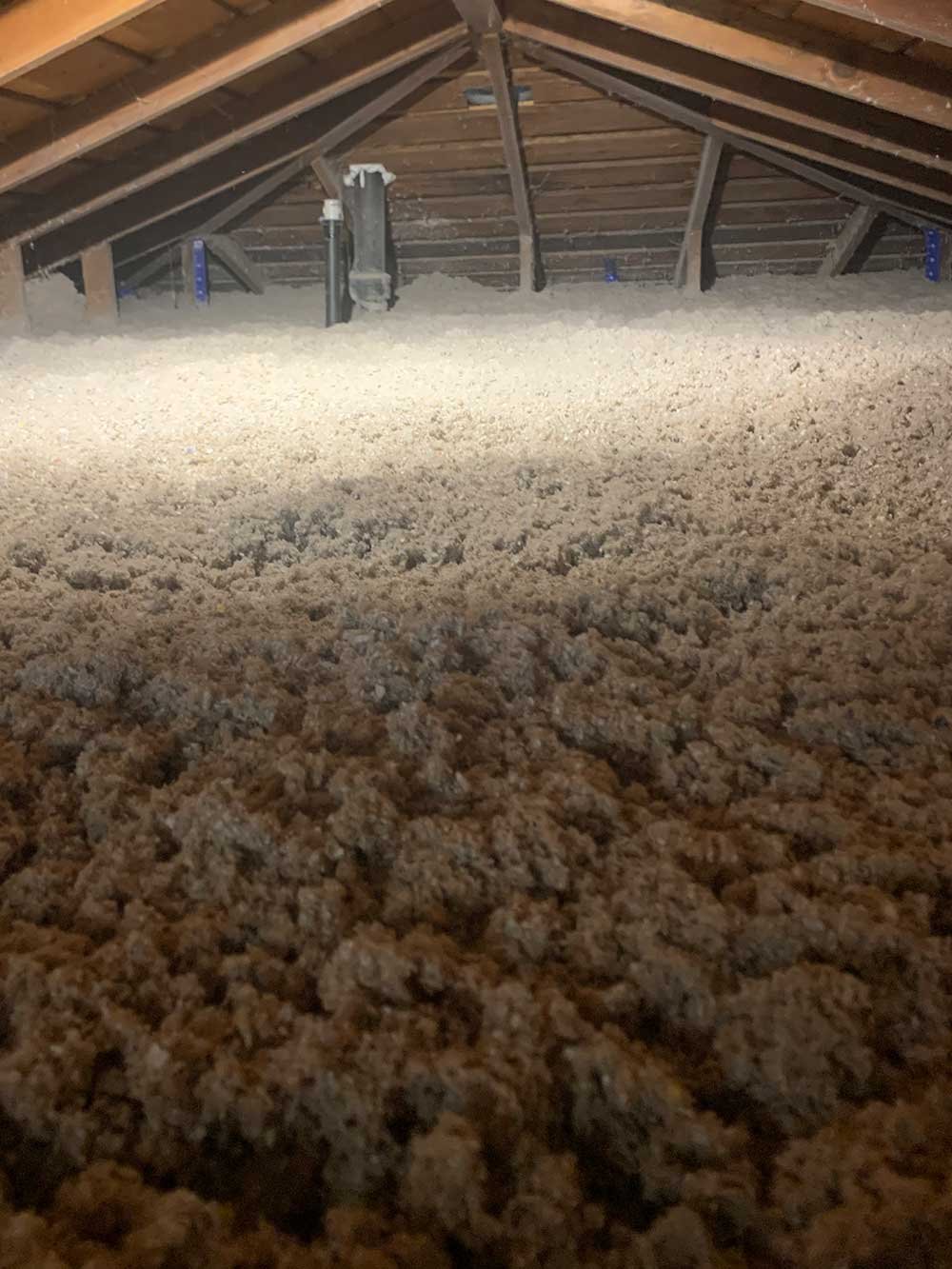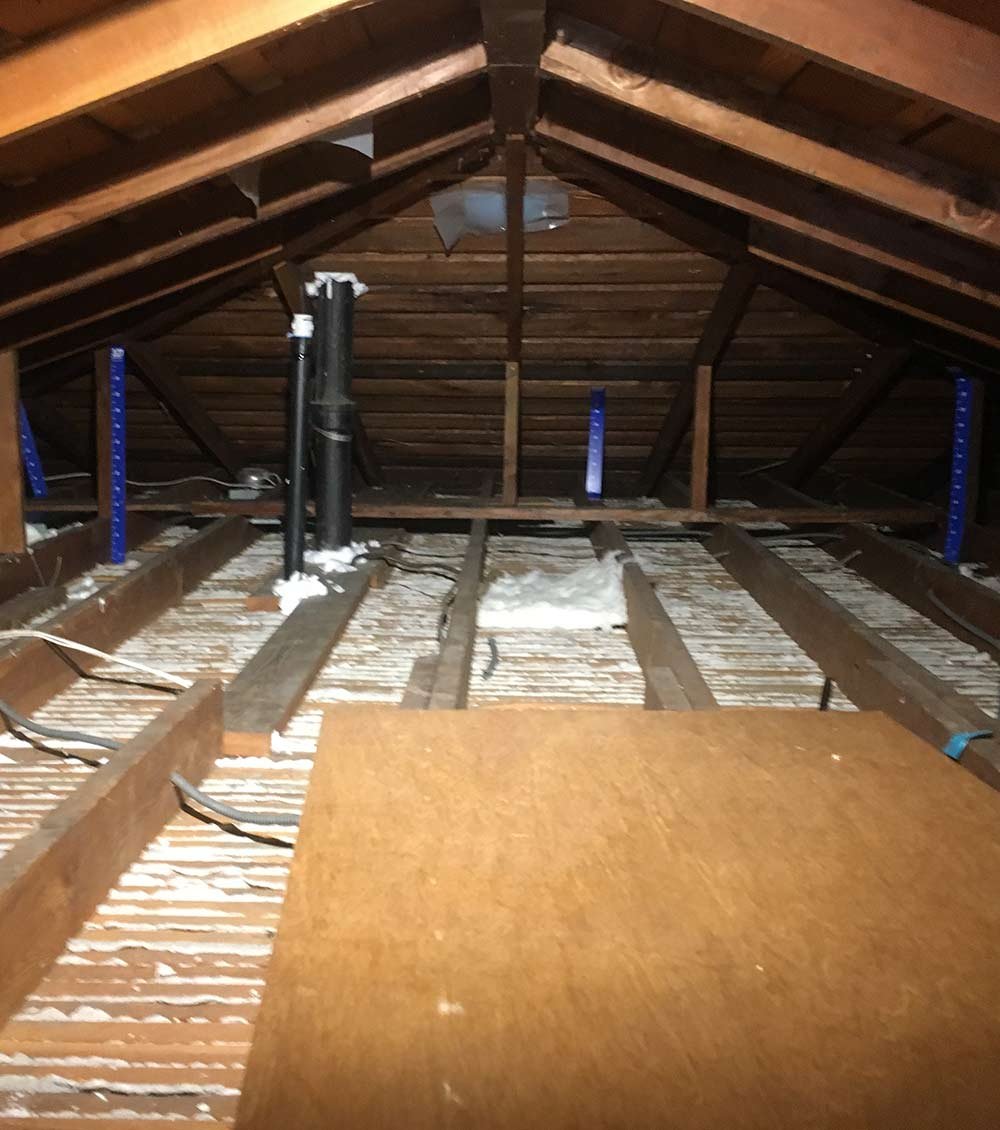Attic Foam Board Insulation in Portland + Bend
Author: Bill Hoelzer / Published: April 2022 / Read Time: Two Minutes
To insulate an attic in Portland or Bend, most homeowners choose one of two options:
#1 Attic Foam Board Insulation
#2 Blown-In Cellulose Insulation
The choice between foam board and cellulose comes down to this: How do you want to use your attic?
Foam Board Insulation: If you want to use your attic for storage or a new bedroom, you should go with rigid foam board insulation.
Cellulose Insulation: If you have a flat attic and don’t need the space, we recommend installing blown-in cellulose insulation.
Both of the photos above actually come from the same project. The homeowner in Portland used foam board to convert part of their attic to a new bedroom. They didn’t have enough headroom in a second part of their attic, so they covered the second part with blown-in cellulose insulation.
What makes sense for your home in Portland or Central Oregon? Start by giving us a call at 541.330.8767, or schedule an appointment with one of our consultants.
Attic Foam Board Insulation vs. Cellulose
Here are some of the key considerations at a glance. We’ll get into more detail below.
| Insulation Value | ||
| Pricing | ||
| Functional Space |
Attic Foam Board Insulation: Insulation Value
There are a couple different ways to think about insulation value: (1) insulation value per inch; and (2) installed insulation value.
Insulation Value Per Inch
Winner: Attic Foam Board Insulation
With an impressive insulation rating of about R-7, foam board delivers more insulation value per inch than almost anything else. By contrast, cellulose insulation has an average rating of about R-3.5.
Installed Insulation Value
Winner: Cellulose Insulation
When we insulate an attic with cellulose, we cover the entire floor of the attic with about a foot and a half of insulation, bringing the total installed insulation value to about R-60.
Here’s a before and after photo of the Portland insulation project referenced above. The blue measuring sticks will give you a sense for the depth of blow-in cellulose insulation.
With foam board, we can only achieve about R-30 when filling attic slopes with a 4-inch depth, which is typical of older homes. Even though foam board deliver more insulation value per inch, the total installed insulation value is only about half what we achieve with cellulose.
Recent Attic Foam Board Insulation Projects
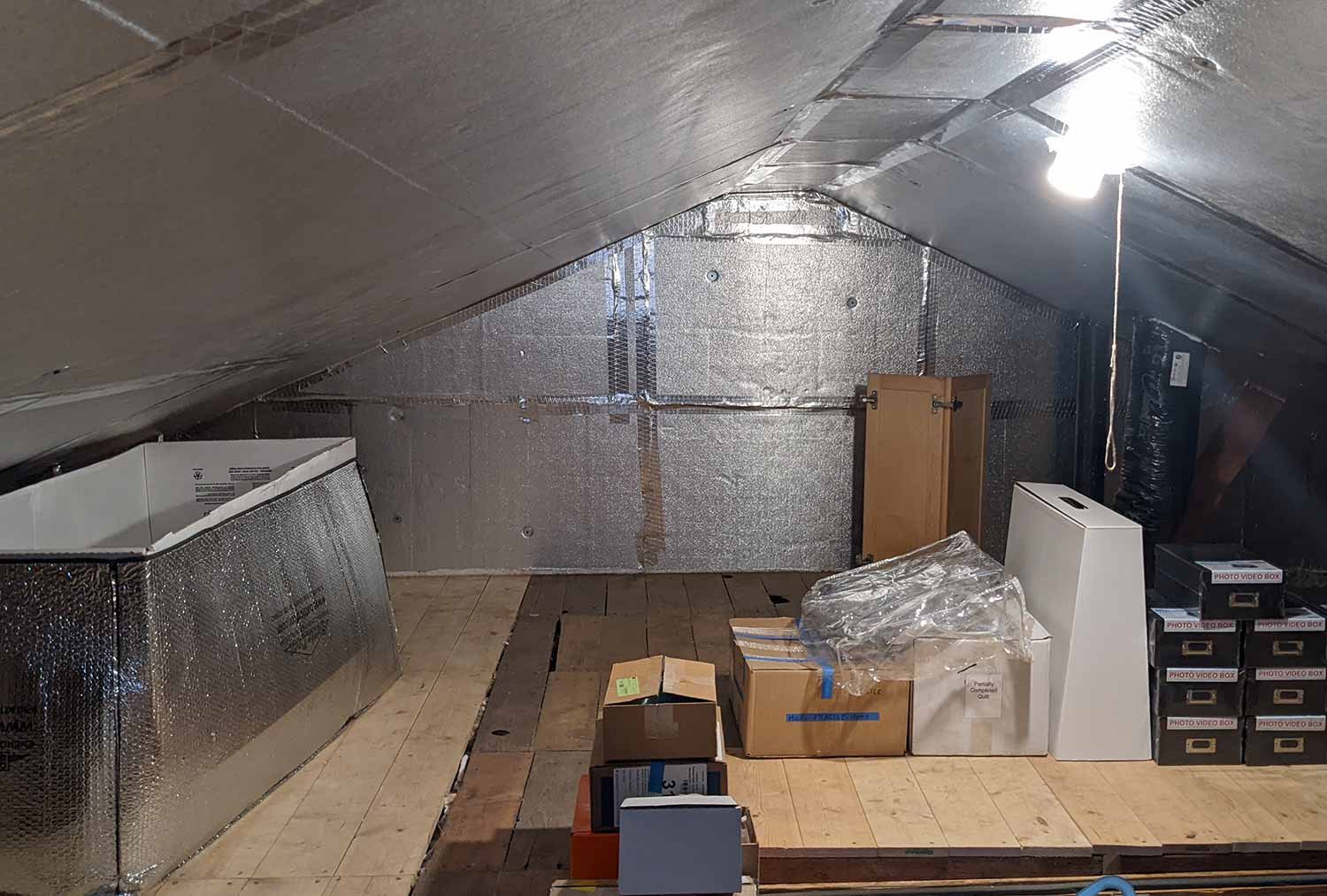
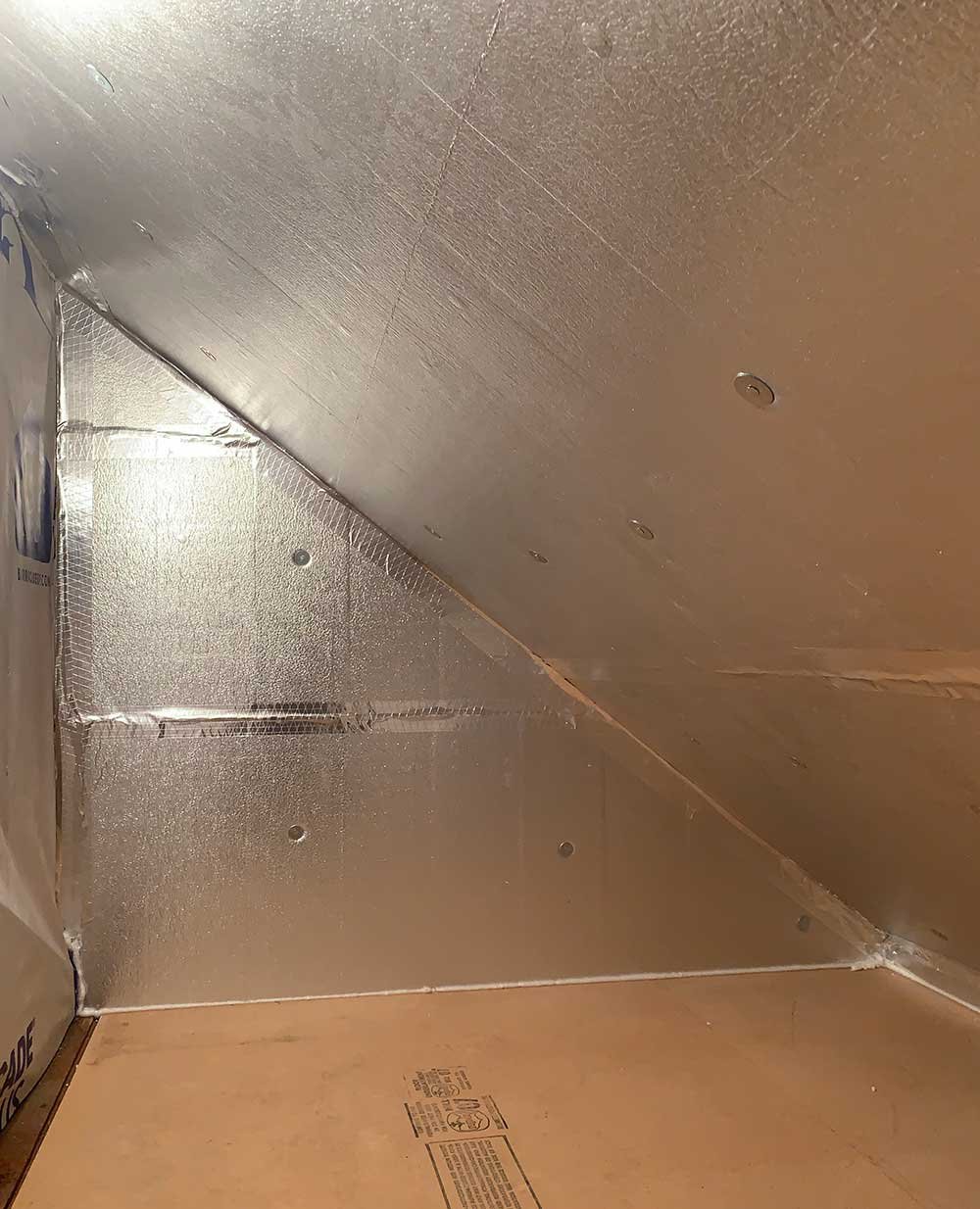
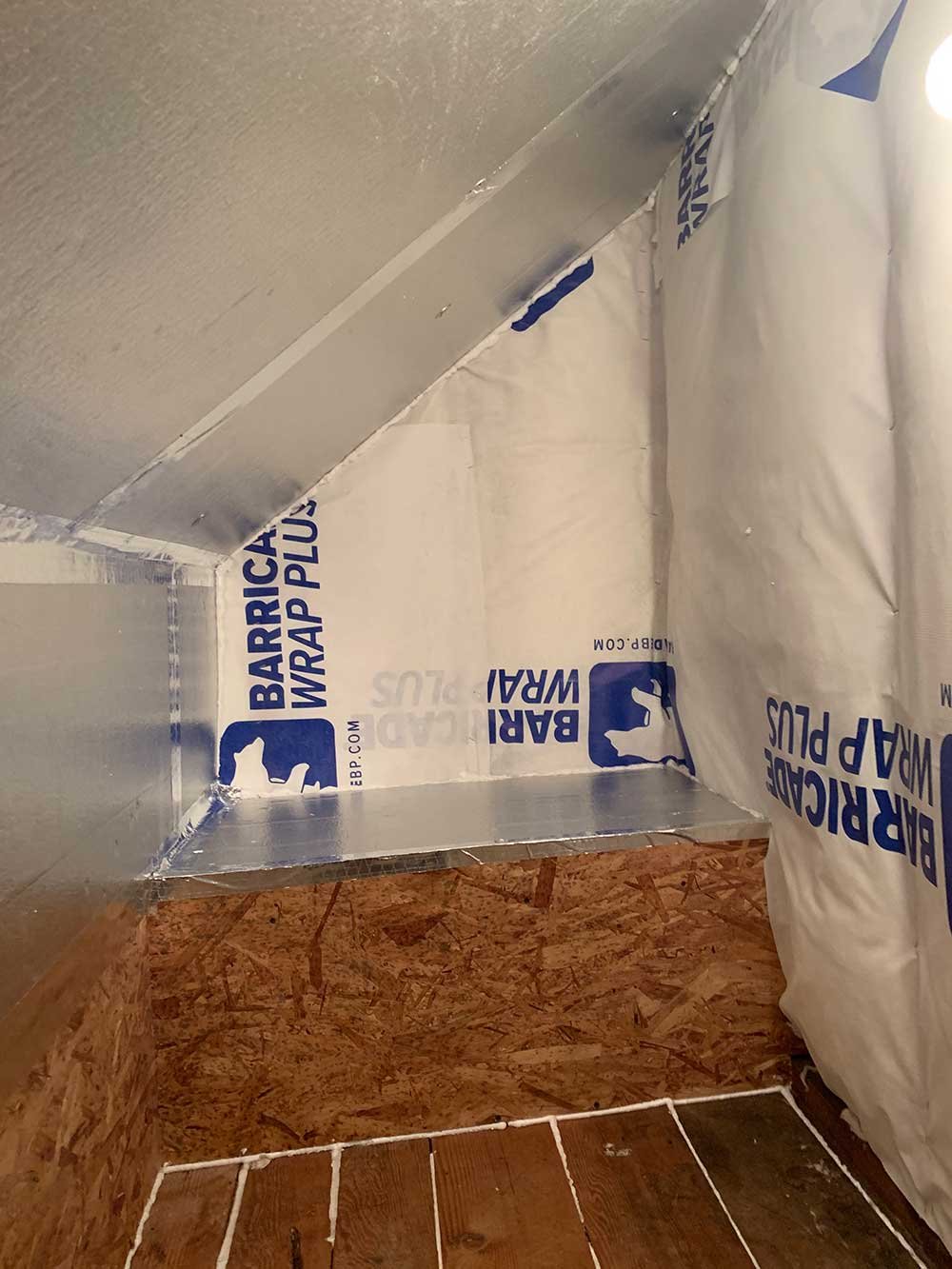
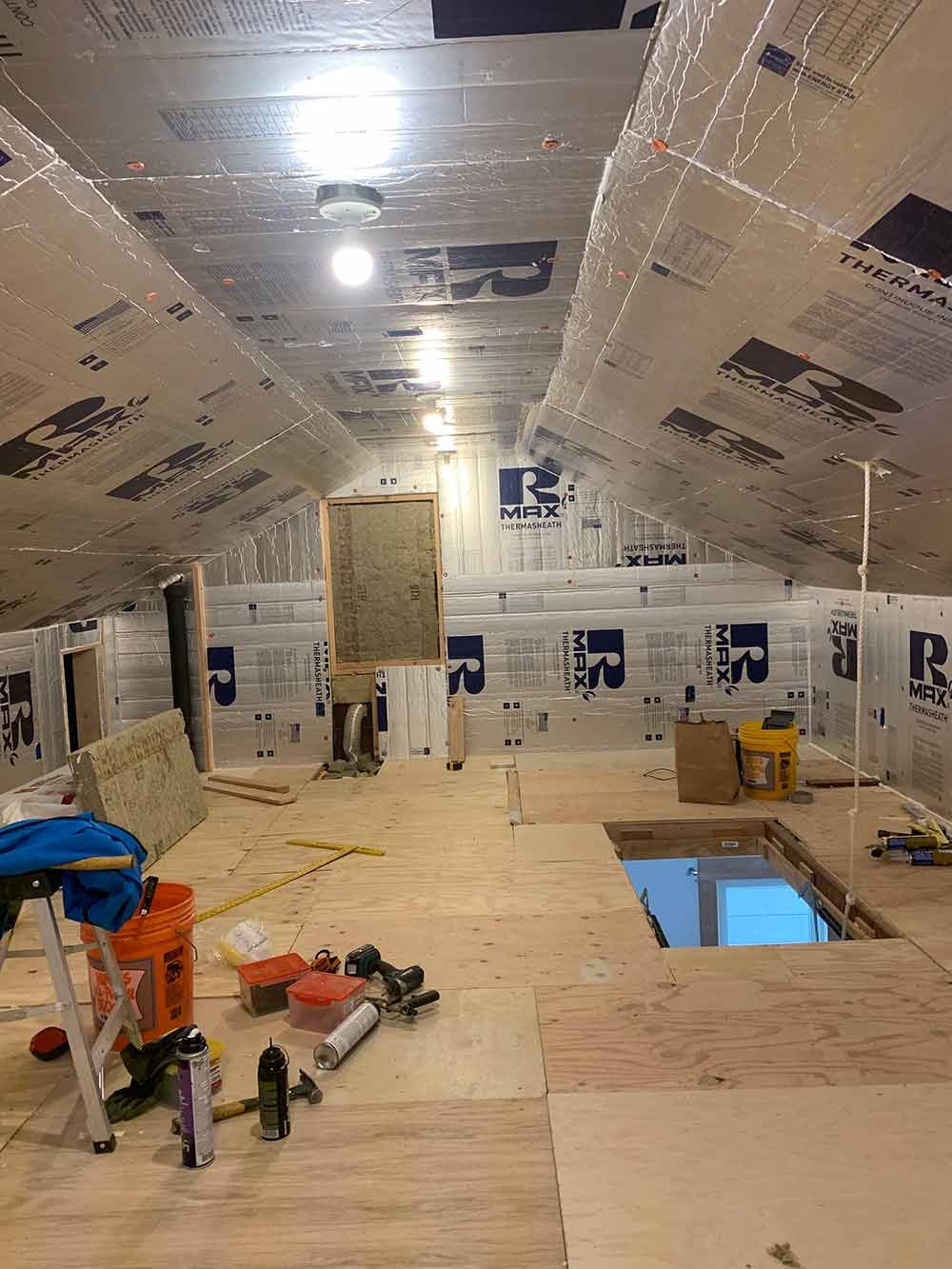
Attic Foam Board Insulation: Upfront Costs
You’ll pay more upfront to insulate an attic with foam board, but you’ll get more value from the functional space and perhaps in the resale of your home.
It costs about three times more to insulate an attic with foam board compared to blown-in cellulose.
The reason? Foam board costs more than cellulose, and it’s much more labor intensive to install. It takes a great deal of time and precision to create a consistent thermal boundary with foam board on an attic slope.
Attic Foam Board Insulation: Long-Term Value
The value that you get from attic foam board insulation depends primarily on how you intend to use the space.
Add Storage in Side Attics
Many Portland homes have a “half floor” upstairs, which is most easily recognized by the sloped ceiling with a crown or flat area at the very top. Behind the short vertical walls, called “knee walls,” you may have side attics that you can access.
After insulating the slopes of your side attics with rigid foam board, you can use the side attics for additional storage. In general, you won't get to add the side attics to the total square footage of your home for resale purposes, but you'll get a huge gain in functional space.
It's possible to store things in a side attic with cellulose insulation if you build a platform above the insulation. The main issue is that the platforms like this get incredibly hot during the summer months. There aren’t many things that could withstand the heat without getting damaged.
Get Better HVAC Performance
Side attics insulated with rigid foam board will maintain a more consistent temperature throughout the year. That makes them better for storing personal items as well as HVAC equipment.
For example, it's not uncommon to see an air handler for a heat pump in a side attic. If you can keep the air handler out of extreme temperatures by installing rigid foam board, then you’ll put less stress on the air handler, improving its performance and extending the life of the system.
Add New Living Space
If you have enough space to add a new bedroom or play room upstairs, you should strongly consider installing attic foam board insulation. Cellulose doesn't make sense in this application, unless we’re talking about installing dense pack cellulose into existing wall cavities.
When adding an upstairs bedroom, some people choose to insulate attic slopes with fiberglass. We don’t recommend this. Fiberglass delivers less than half the insulation value of foam board: R-13 vs. R-28 in a 4-inch cavity. If you go with fiberglass, you’ll pay more on your energy bills and see a much wider range of temperatures in your new bedroom.
Adding square footage to your home can have a huge payoff when you go to sell your home. Here are the latest median price per square foot estimates for Portland and Bend, Oregon.
The Conclusion
It really comes down to how you want to use your attic. If you want storage or additional living space, go with attic foam board insulation. Don’t need the space and want the most bang for your buck? Cellulose will be the way to go. Feel free to call with questions: 503.223.8767.
Learn More about Home Insulation
Start by visiting our insulation resource pages for homeowners in Portland or Bend, Oregon. You can also keep reading our latest blog articles about insulation and hiring insulation contractors.


